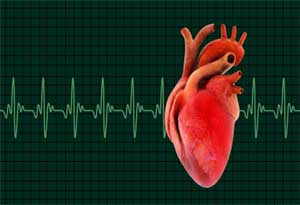- Home
- Editorial
- News
- Practice Guidelines
- Anesthesiology Guidelines
- Cancer Guidelines
- Cardiac Sciences Guidelines
- Critical Care Guidelines
- Dentistry Guidelines
- Dermatology Guidelines
- Diabetes and Endo Guidelines
- Diagnostics Guidelines
- ENT Guidelines
- Featured Practice Guidelines
- Gastroenterology Guidelines
- Geriatrics Guidelines
- Medicine Guidelines
- Nephrology Guidelines
- Neurosciences Guidelines
- Obs and Gynae Guidelines
- Ophthalmology Guidelines
- Orthopaedics Guidelines
- Paediatrics Guidelines
- Psychiatry Guidelines
- Pulmonology Guidelines
- Radiology Guidelines
- Surgery Guidelines
- Urology Guidelines
Cardiac arrest caused by Diphenhydramine overdose

A case of Cardiac arrest caused by Diphenhydramine overdose has been reported by Dr.Tomoya Nishino at Department of Emergency and Critical Care Medicine, Tokai University School of MedicineIsehara, Kanagawa, Japan and colleagues which has appeared in Journal of Acute Medicine and Surgery. DPH is relatively safe for wide use as an OTC drug, it causes dose‐dependent toxicity and may be fatal if overdosed.
According to history a 45‐year‐old man without any significant medical history was transferred to our emergency department because of disturbance of consciousness. According to family members, he had returned home 16 h before being admitted to the hospital and informed his family that he had consumed an overdose of an OTC drug. The details of drug consumed was not known because the patient did not remember the amount ingested and the medication container could not be found.
The patient had ingested the drug outside the home then went swimming in the ocean. At 14 h before admission, his family reported that he went to bed and was checked by his parents every hour. Although he was able to speak until 1 h before admission, he was groaning and feeling disturbed. His parents called for an ambulance; however, he suffered cardiac arrest when the ambulance arrived. A helicopter was requested, and evaluation by the ambulance crew revealed pulseless electrical activity. Cardiopulmonary resuscitation (CPR) was initiated, and continued assessment by the doctor and helicopter crew revealed asystole. After the patient received an i.v. line, intubation, continuous CPR, and 2 mg adrenaline by the doctor and helicopter crew, spontaneous circulation returned.
They also administered 0.5 mg atropine because his heart rate was approximately 40 beats/min. Initial evaluation at the emergency department revealed a Glasgow Coma Scale (GCS) of E1V1M1, systolic blood pressure of approximately 60 mmHg (only carotid artery was palpable), heart rate of 100 beats/min, axillary temperature of 36.7°C, oxygen saturation (SpO2) of 83% (O2, 10 L/min), and 6‐mm dilation of both pupils without reflex. No injury marks were found. Cardiac arrest due to drug overdose was diagnosed, and VA‐ECMO was initiated 20 min after arrival.
Laboratory tests revealed mixed acidosis, liver and renal dysfunction, elevated creatine kinase levels, and the Triage Panel for Drugs of Abuse (SYSMEX Corporation, Kobe, Japan) was negative (Table 1).
| Hematology | Blood sugar | 335 mg/dL | |
| White blood cells | 11,400/μL | Ethanol | <3.0 mg/dL |
| Hemoglobin | 12.4 g/dL | Troponin I | 0.56 ng/mL |
| Hematocrit | 41.6% | Myoglobin | >5000 ng/mL |
| Platelets | 12.5 × 104/μL | ||
| Coagulation | |||
| PT‐INR | 1.15 | ||
| D‐dimer | 57.3 μg/mL | ||
| Blood chemistry | Fibrinogen | 144 mg/dL | |
| Aspartate aminotransferase | 336 IU/L | Arterial blood gas analysis (O2 10 L/min) | |
| Alanine aminotransferase | 338 IU/L | pH | 6.773 |
| Lactate dehydrogenase | 730 IU/L | PaCO2 | 76.4 mmHg |
| Creatine kinase | 5489 IU/L | PaO2 | 407 mmHg |
| Blood urea nitrogen | 16 mg/dL | Bicarbonate | 10.5 mmol/L |
| Creatinine | 1.66 mg/dL | Base excess | −26.1 mmol/L |
| C‐reactive protein | 0.71 mg/dL | Lactate | 156 mg/dL |
| Sodium | 143 mEq/L | Urine | |
| Potassium | 5.4 mEq/L | Triage DOA | Negative |
| Chloride | 98 mEq/L | ||
- DOA, Drugs of Abuse; PT‐INR, prothrombin time – international normalized ratio; PaCO2, partial pressure of arterial carbon dioxide; PaO2, partial pressure of arterial oxygen.
Non‐contrast computed tomography (CT) of the head showed loss of grey-white matter differentiation without haemorrhage, and contrast‐enhanced CT of the trunk showed no pulmonary embolism, aortic dissection, or free air. Electrocardiography revealed junctional rhythm, but QTc could not be evaluated because of complete right bundle branch block. Bedside transthoracic echocardiography showed good wall motion with no asynergy, pericardial effusion, left ventricular hypertrophy, or right ventricular overload.
The patient was treated with VA‐ECMO, given 0.4 μg/kg/min adrenaline, and subjected to gastric lavage. As his potassium level rose to 7.2 mEq/L; therefore , he was treated with insulin and glucose. Despite treatment, his blood pressure gradually decreased. Bedside transthoracic echocardiography carried out on the second day of hospitalization showed diffuse hypokinesis of wall motion. He was diagnosed with catecholamine‐refractory hypotension. Despite treatment with glucagon, his blood pressure and heart rate gradually decreased, and he died on the third day of hospitalization. After his death, his serum DPH concentration at the time of arrival was found to be 18.7 μg/mL.
Although the patient ingested a fatal dose of DPH, it is estimated that it took approximately 16 h for symptoms to appear. Therefore, caution should be exercised when symptoms occur long after DPH ingestion.
An overdose of Diphenhydramine can be fatal because peak serum levels of DPH are reached approximately 2–3 h after ingestion, and elimination half‐life is approximately 4 h. Although it is considered as a relatively safe drug with a large therapeutic range, it causes dose‐dependent toxicity.
For more details click on the link: https://doi.org/10.1002/ams2.351

Disclaimer: This site is primarily intended for healthcare professionals. Any content/information on this website does not replace the advice of medical and/or health professionals and should not be construed as medical/diagnostic advice/endorsement or prescription. Use of this site is subject to our terms of use, privacy policy, advertisement policy. © 2020 Minerva Medical Treatment Pvt Ltd